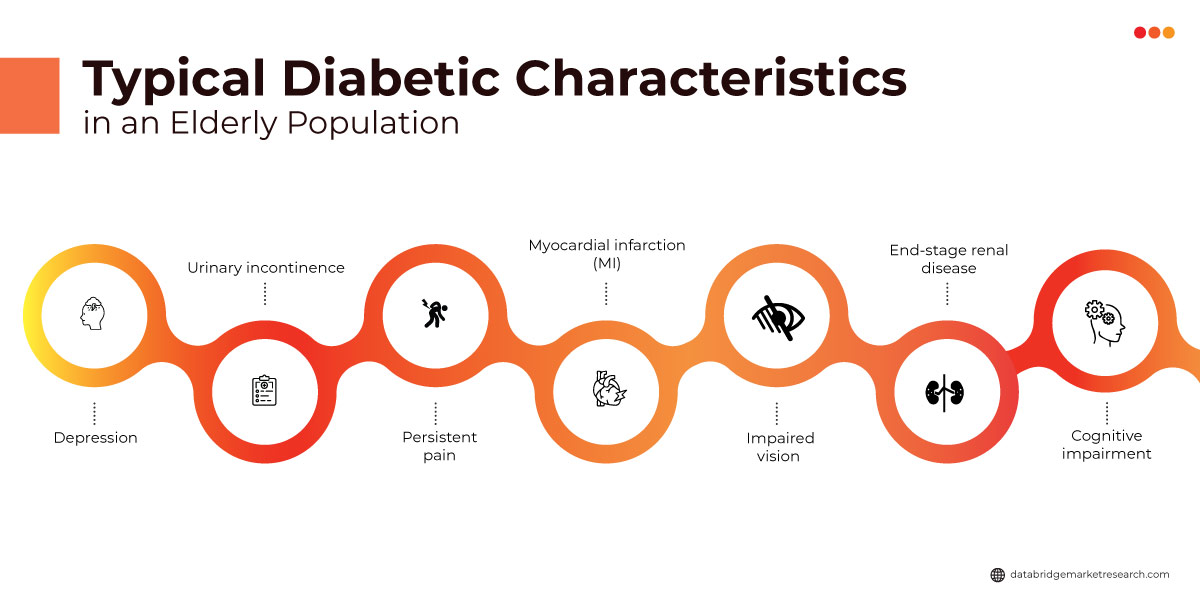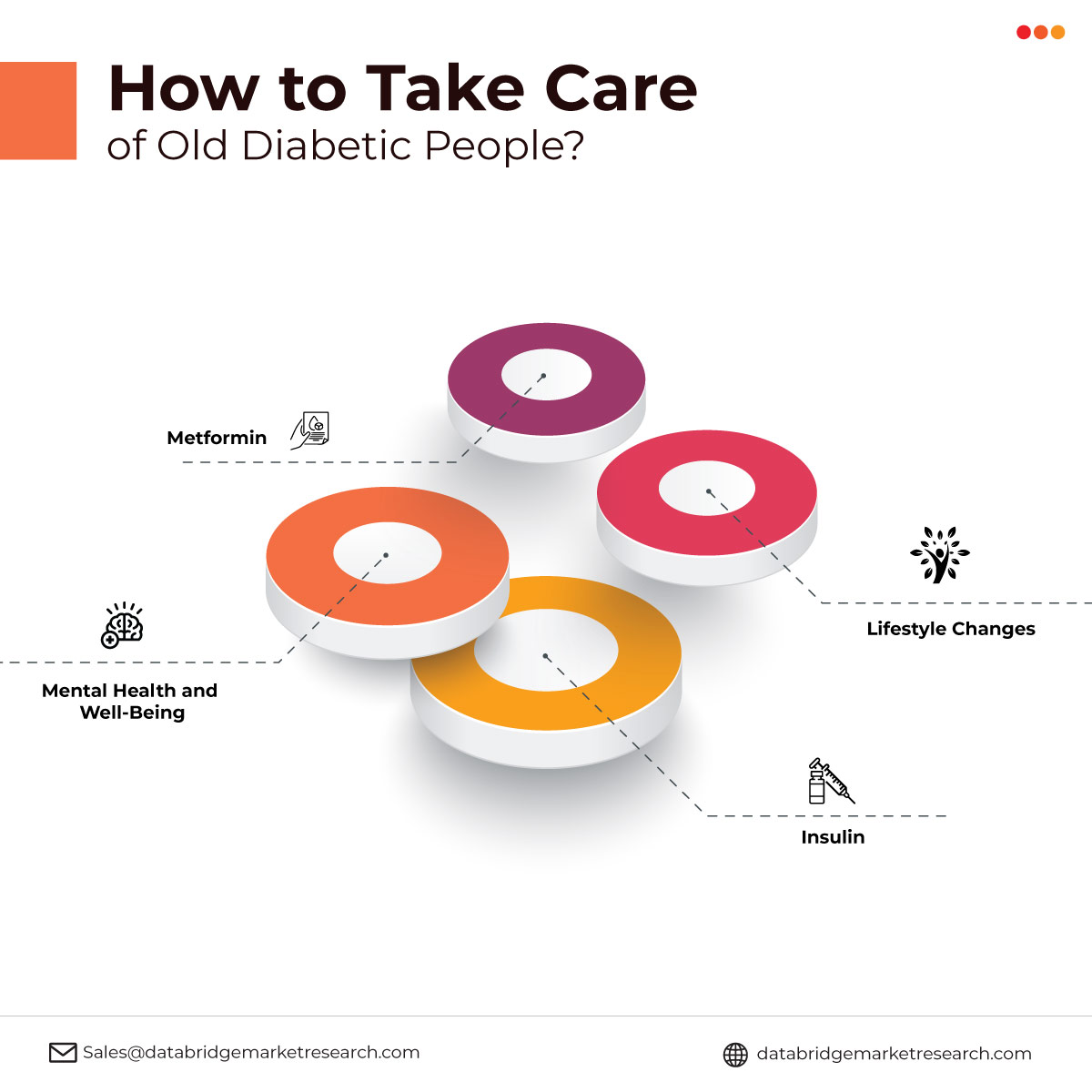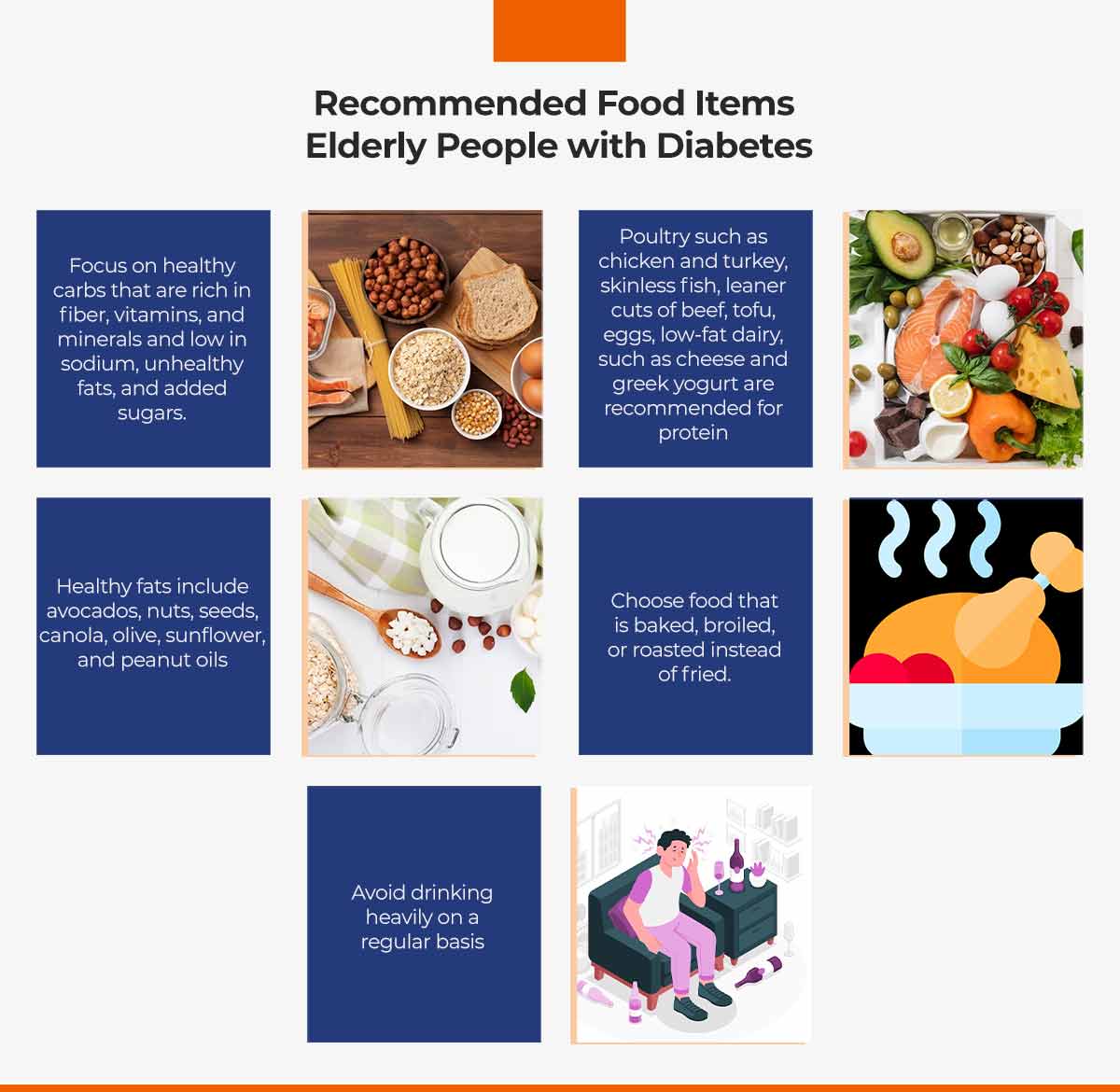With the increase in the aging population and rising life expectancy, it is anticipated that the prevalence of type 2 diabetes will steadily rise. Aging is also accompanied with geriatric syndromes such cognitive decline, depression, urine incontinence, falling, polypharmacy, and sarcopenia in addition to the macrovascular and microvascular problems of aged individuals with diabetes mellitus (DM). Elderly people with type 2 DM are at a high risk for sarcopenia and physical impairment. There is a situation of muscle loss in type 2 diabetes individuals. Such modifications in type 2 diabetes may be caused by changes in skeletal muscle protein turnover, which may be a crucial step in the aetiology of this disease.
Incidence of Diabetes
Type 2 diabetes is a widespread medical issue in the modern world, and its prevalence is rising daily as life expectancy increases. According to a study done in the United States, type 2 diabetes prevalence rose from 16% to 23% between 1995 and 2004. According to the most recent statistics, 22% to 33% of U.S. citizens over 65 years have been given a diabetes diagnosis. The likelihood that diabetes will increase in prevalence during the next 20 years is predicted. Another projection states that between 2005 and 2050, the number of people 65 and older will increase by an estimated 4.5 times.
According to researchers, those over 65 years who adopt a healthier lifestyle and mindset can recover from a type 2 diabetes diagnosis. More psychological evidence in type 2 diabetics, according to the researchers' results, is essential for treating the disease. Lower body mass index, fewer hospitalizations, and higher physical functioning were linked to those who were better able to handle the difficulty of a type 2 diabetes diagnosis, the researchers found. People who are able to control type 2 diabetes witnessed depressed symptoms, a lower self-reported impairment, higher physical quality of life, a faster stride, stronger grips, and a lower likelihood of frailty.
Typical Diabetic Characteristics in an Elderly Population

As people age, their glucose tolerance gradually decreases. This is due to a decrease in the beta-cell's ability to compensate for sugar intake after eating. As this happens, insulin resistance sets in and blood sugar levels become elevated during meals later on in elderly patients' lives. Consequently, one third of those who are tested with A1C or FPG end up not being diagnosed with diabetes based on these tests alone.
The incidence of the disease increases as you get older. As a result, adults may be diagnosed incidentally after age 65, or may have had a diabetes diagnosis in middle age or earlier onset. Age-related DM is characterized by lower A1C and the use of less insulin. In comparison to adults with diabetes diagnosed in middle age, the retinopathy story is more prominent in late-onset diabetic cases, and interestingly there is no difference in prevalence of cardiovascular disease (CVD) or peripheral neuropathy according to age at onset. In diabetic adults, increased development risk of lower extremity amputation, myocardial infarction (MI), impaired vision and end-stage renal disease are witnessed. Patients over 75 years of age have a higher risk of developing multiple complications than the age group of 65-74 years. Older adults are at higher risk for developing type 2 diabetes because of the combined effects of increased insulin resistance and pancreatic islet dysfunction.
Our DBMR team investigated the global kidney disease market and witnessed that the expected CAGR of the global kidney disease market tends to be around 5.50% in the mentioned forecast period. Europe has been witnessing the highest growth for the global kidney disease market throughout the forecasted period due to increasing initiatives by the government and pharmaceutical organizations to spread awareness and the presence of generic manufacturers. North America dominates the market due to the advancement of technology for kidney diseases and increasing initiatives by pharmaceutical organizations to generate novel formulations.
To know more about the study, kindly visit: https://www.databridgemarketresearch.com/reports/global-kidney-disease-market
Complications of Diabetes in the Elderly Population
Older people with DM have a higher risk of cardiovascular diseases and a higher rate of morbidity and mortality than younger people. They are at high risk for physical and functional disabilities. There are more geriatric syndromes in the elderly. The most important risk factors for memory deficits, dementia, and Alzheimer's are old age, lack of physical and mental activity, high blood pressure, sleep apnea, smoking, and deficit in some nutrients. There is a link between brain deficiency and deficiency of some vitamins. It has never been proven that micro nutriments substitution cures Alzheimer's or another cerebral decline, despite seeming to improve mental activity.
Cardiovascular diseases are the most common complications because of accelerated atherosclerosis. Urinary and fecal incontinence are higher in old diabetics compared to the non-diabetic population. Reduced vision is also much higher in old people with DM because of degenerative maculopathy, hypertensive retinopathy, cataracts, and glaucoma.
Our DBMR team investigated the global cardiovascular disease drug market and witnessed that the expected CAGR of the global cardiovascular disease drug market is tend to be around 5.02% in the mentioned forecast period. North America has been witnessing positive growth in global cardiovascular disease drug market throughout the forecasted period due to the global leaders in research and development activities, high incidence of heart diseases and presence of refined medical facilities. Asia-Pacific dominates the market due to the developing healthcare facilities, large number of generic manufacturer and rise in government initiatives and specialist communities.
To know more about the study, kindly visit: https://www.databridgemarketresearch.com/reports/global-cardiovascular-disease-drug-market
How to Take Care of Old Diabetic People?

- Mental Health and Well-Being
Depression is more common in people with long-term conditions but may go unnoticed in older people having complex health problems. Painful neuropathy, foot ulceration, and adverse effects of medication can all contribute to depression. The risk of dementia also increases with age. Anything that affects mental well-being may affect our ability to successfully manage our diabetes. Simple tests are available to screen for depression or dementia. Recognizing these issues at an early stage can help limit their longer-term impact. Screening on admission and annually is recommended for older people living in care homes.
- Metformin
Metformin reduces the amount of blood sugar in the body. Due to its low risk of hypoglycemia, metformin is an attractive agent to use in older adults. It should not be used in people with risk of lactic acidosis, such as people with stroke, pneumonia, myocardial infarction, heart failure, andrenal insufficiency. The safe level for renal failure is a glomerular filtration rate (GFR) = 30 ml/min. Losing weight is one of the limiting factors. Old people are advised to drink a lot of water to avoid dehydration during the hot summer months.
Metformin induces Vitamin B12 deficiency in 18.7% to 30% of patients with DM. There is a correlation between old age and the deficit in cyanocobalamin. Vitamin B12 status should be systematically checked in people responding to above mentioned situations. The deficit in Vitamin B12 induces peripheral neuropathy with or without anemia and leads or worsens cognitive dysfunction in old population.
Our DBMR team has investigated the metformin market and witnessed that North America accounts for the largest market share due to a continuous increase in patients suffering from diabetes, obesity among other diseases and rise in research and development activities and government funding. Europe is also expected to grow exponentially due to the enhanced distribution channel network and rising strategic initiatives by market players for business expansion. Data Bridge Market Research analyses the market is growing at a CAGR of 6.00% in the above-mentioned research forecast period.
To know more about the study, kindly visit: https://www.databridgemarketresearch.com/reports/global-metformin-market
- Lifestyle Changes
Counseling is very important for all elderly diabetic patients with lifestyle changes such as exercise, diet, behavioral changes, and weight loss in patients who need it. In the elderly diabetic group, response to the lifestyle changes were found to be higher than the young diabetic age group according to the diabetes protection program (DPP).
- Physical Activity: All elderly diabetic patients must perform physical activities according to their functional capacities. Prior to physical activity, high-risk, symptomatic individuals with coronary artery disease should be assessed with electrocardiograms or cardiac tests. Aerobic activity of at least 5 d for 30 min each week is recommended for these individuals. Except this, patients with a high risk of falling should be directed to physiotherapists for balance and muscle strengthening exercises before workout.
- Medical Nutrition Therapy: All geriatric diabetic patients should be given medical nutrition education and treatment should be adjusted according to their individual needs. When preparing the eating plan, age-related person-specific differences such as deterioration in taste, dietary restrictions, impaired gastrointestinal function, additional illnesses, reduced ability to shop, and reduced food preparation capacity must be considered.
Insulin
All over the world, insulin is under-utilized in older adults because of fear of hypoglycemia by the patient and his family and the clinician. Multi injections can be dangerous for an old person. Nowadays, availability of long-acting insulin with new pens and glucometers lead to easier use of insulin analogs in older patients. New technologies will improve the acceptance and quality of life of people with diabetes. Routes such as oral, buccal, pulmonary, nasal, and or transdermal drugs have been proposed to overcome the problem. Actually, the quality of life has already improved considerably in patients taking one or two daily doses of intermediate insulin.
However, before beginning insulin therapy, it is important to assess whether or not the patient is physically and especially cognitively able to use insulin. In developed countries where people are used to living independently, a plan like this may allow an older patient to remain at home. Most old people live with their families in developing countries.
Our DBMR team investigated the global insulin delivery devices market and witnessed North America dominating the market because of the prevalence of diabetes and the favorable reimbursement scenario within the region. Asia-Pacific (APAC) is expected to witness significant growth from 2022 to 2029 due to the rise in patient awareness toward disease in the region. It witnessed a CAGR of 7.90% during the forecast period of 2022-2029.
To know more about the study, kindly visit: https://www.databridgemarketresearch.com/reports/global-insulin-delivery-devices-market
Recommended Food Items Elderly People with Diabetes
Good nutrition is an important aspect of managing diabetes in older adults. A balanced combination of high-fiber carbohydrates, lean protein, and healthy fats can help to maintain stable blood sugar levels and prevent dangerous fluctuations. Following a diet plan that is nutrient-sufficient and low in fat and calories can help keep the blood sugar levels safe and prevent health complications.

Conclusion:
Diabetes mellitus is frequently unnoticed in elderly patients as it is either asymptomatic or symptoms are nonspecific. Type 2 diabetes is a lifelong condition, but with the proper care, its effects can be reduced and insulin might be avoided. Living a healthy lifestyle will reduce the odds of having diabetes for individuals over 65 years of age, such as a healthy diet. The ideal care of old diabetic is continuous care and a multidisciplinary approach in order to decrease cardiovascular risk factors and increase life expectancy with a high quality of life.









